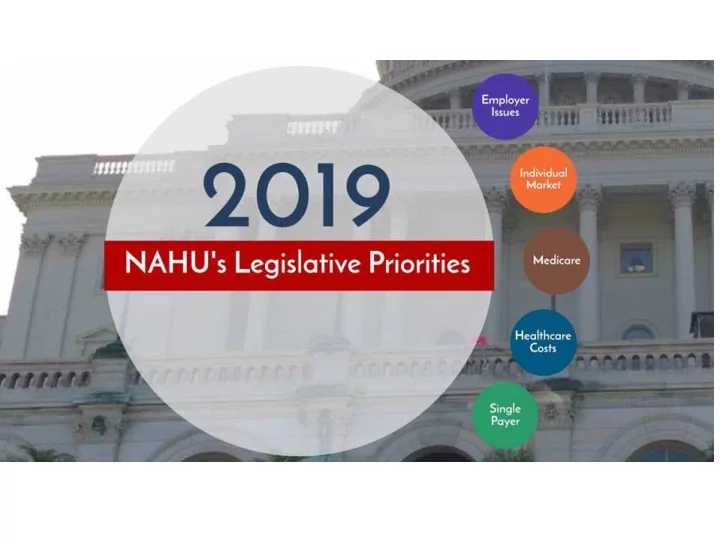

The Roads Leading to Single-Payer • The present imperfections of Health Care Consumerism and the problem of false-savings • Shifting electoral demographic with greater exposure to single-payer systems (“Your Kids Abroad”) • Regulatory framework under The Affordable Care Act encourages price increase • Elimination of lifetime/annual limits • Current Medical Loss Ratio • 3 to 1 age-bands in small group/individual markets • Texas v. United States The Fear: The electorate may be ready for drastic measures that are based on an imperfect understanding of the American health care system
DC focuses on payer reform • The health care reform debate in DC has only focused on who pays, but neglects to address what we’re actually paying for • Lobbyists all but ensure this will continue to be the focus without a broader conversation about what drives health care spending in the first place My advice: Be skeptical of any politician who promises to fix health care (it’s beyond their control)
SDOH: Addressing Root-Cause
Why we should pump the brakes on single-payer • Our system metastasized over 70 years in an uncoordinated fashion to represent • In 2017, $3.5 trillion in spending ($10,739 per person) which represented 17.9% of GDP • Current projections place health care spending at 30% of GDP by 2030 • Moving to government negotiated pricing would have a catastrophic impact on the broader economy • Forced selection of winners and losers (gov’t cannot afford to subsidize private market rates) • The problem with primary care • 120,000 primary care physician shortfall • Cost of medical school education • Primary care is the lynchpin for single-payer
Who holds the key to positively impact health care spending in the United States? Private Sector Innovators
What are the stakes for employer- payers? McKinsey & Co. Study: “Even within a single local market, we have found that the cost to deliver the same episodes of care typically varies by 30 percent to well over 100 percent , even after we held constant the prices that hospitals, physicians, and other providers charge and risk-adjusted the costs to reflect patients’ health status…. The cost differences were unrelated to any discernable variation in care quality or outcomes.”
An Appropriate Analogy: The Uberization of Healthcare
AMZN ZN-JPM PM-BRK Health h Venture AMZN-BRK-JPM Three Largest Health Insurers AMZN Aetna -$177 billion revenue (2017) -$61 billion revenue (2017) (CVS $184 billion in -$131 billion in total assets revenue) -613,000 employees -$55 billion in total assets (CVS $95 billion in total -100 million Amazon Prime members engaged in assets) exchange purchasing of consumer goods -49,9828 employees -21 million health members BRK UnitedHealth Group -$242 billion revenue (2017) -$201 billion revenue (2017)—includes OptumRX -$715 billion in total assets -$139 billion in total assets -377,000 employees -270,000 employees -36.8 million health members JPM Cigna -$99 billion revenue (2017) -$47 billion in revenue (2017) (ExpressScripts $100 -$2.53 trillion in total assets billion in revenue) -250,000 employees -$61 billion in total assets -$1 trillion in processing volume for clients -46,000 employees -15.9 million health members
Recommend
More recommend